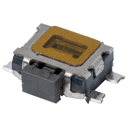Control Your Throttle
By Cedric Garropin & Daisy Liu | October 27, 2021
The global motorcycle market size was USD 278.07 billion in 2020. The global impact of COVID-19 has been unprecedented and staggering, with motorcycles witnessing a positive demand shock across all regions amid the pandemic. Based on our industry analysis, the global market will exhibit a stellar growth of 6.87% in 2021. The rise in CAGR is attributable to this market’s demand and growth, returning to pre-pandemic levels once the pandemic is over.1
A motorcycle is equipped with an engine and multiple electronic and mechanical components. The design of the motorbike varies significantly to meet country automotive specifications, as well as to suit a variety of different purposes including commuting, cruising, long-distance travel, sports activities, racing, as well as off-road riding. The motorbike is increasingly seen as the ideal transportation in emerging cities.

The pandemic has changed the way people utilize transportation. Local buses, trains, and other public transport are prone to contamination, as they are often crowded. As a result, many people have opted for private mobility options, with motorbikes and scooters being a preferred choice because of their affordability and convenience. The motorbike industry is also moving from the traditional combustible engine to electric motorcycles. Some governments have worked to accelerate this change with tax incentives for the electric vehicles.
Motorbikes are becoming more and more complex and modern. In addition to electric versions, motorcycle and scooter manufacturers are focusing on improving rider security/safety. Other features such as multi-function modules and controllers on the handlebar increase safety, comfort and luxury.

The throttle grip control has been enhanced as well, with more functionality integrated and adopted such as cruise control, automatic lights, heated handles & seat. With other setting changes, SOS buttons, start buttons and circuit breakers, drivers can find more that fifteen buttons/switches per motorbike.
Connectivity has been also implemented and improved, including hands-free and Bluetooth options in helmets to improve communication with other riders and save the trouble of answering calls or navigating with smartphones. The throttle grip control is trying to look intuitive, but still forcing the technology to fit.
The technology is starting by the CAN BUS network. The story begins in the early 1980s when Bosch developed the protocol for the CAN BUS network. Ten years later, the automotive industry began to adopt it as the standard for future vehicles. Fast-forwarding again in the early 2000s, BMW is believed to be the first manufacturer to incorporate this technology into two wheels. The term CAN (Controller Area Network) BUS usually refers to a network protocol in which a central computer separate from the motorcycle ECU acts as a central communication hub between all other subsystems. For each subsystem, we’ll talk about everything from headlights and turn indicators to engine management systems and ABS.2 The CAN BUS network works with a signal rating, so a few mA and a low power consumption. C&K is offering a popular product that fits with the manufacturer’s requirements in term of performances and integrations.

The K12S Series is an electromechanical keyswitch used underneath the buttons of throttle grip control. The switch provides (tactile) feel, or haptic, to the user when activated. In addition to precise haptics, the K12S shows a dedicated brand signature in terms illumination. The K12S is offered in a range of illumination options.
The K12S series keyswitch offers exactly what the rider needs. It combines a long travel and a high force; this combination is totally adapted to ride the motorbike with gloves. The K12S keyswitch also features waterproof sealing, surface mount technology, low power consumption and is designed to work in harsh environments. It is a unique design, the features are gold-plated, self-cleaning contacts with low contact resistance, a 100N overload resistance.
The K12S keyswitch is available in more than 300 configurations to meet most any motorbike application requirement.
In addition, tactile switches are a common solution for motorcycle shifter and meter applications. Available in illuminated, side or top actuated, sealed or unsealed, silver or gold contact plating, SMT and through-hole versions, tact switches can be tuned to any application requirements. To achieve custom haptics, the actuators, domes, and housings can be mixed-and-matched in order to obtain the right look, feel, and performance.
As an example, the TLS series tact switch comes in a 8.6 x 8.4 x 3.95 mm package with a wide range of different actuation forces including 4N, 7N to 10N. The TLS has a soft actuator and a flat cage that offers a positive tactile feedback, but with a soft sound. Rated to 1000K cycles, the TLS Series has J terminations ensures high reliability and long-life performance.
The TLS series with a soft actuation design also offers an easier tolerance management with possible pre-load, which is commonly designed into automotive consoles, panels, steering, and motorcycles application. The product design ensures a high sealing level IP54 rated offering strong protection against dust and water ingress.
The PTS series has a side actuated tactile solution that delivers high-quality and performance to meet the needs for motorcycle Helmet Bluetooth accessory or Airbag application, when a side version actuation tactile is requested or where miniaturized solutions are in the demand.
The side actuation tactile switches are available for standard SMT printed circuit board mounting process, with multiply actuation forces from 80gf, 160gf to 250gf, in a small 3.6 x 3.5 form factor and reduced height of 1.25 mm for PTS841, or 4.5 mm x 3.4 mm x 3.3 mm factor for PTS845. The available options of small former, different forces, high-quality and performance to meet most of motorcycle Helmet requirement.
1.https://www.fortunebusinessinsights.com/motorcycle-market-105164
2.https://autobala.com/canbus-and-motorcycles-what-is-it-and-why-should-i-care/171935/



